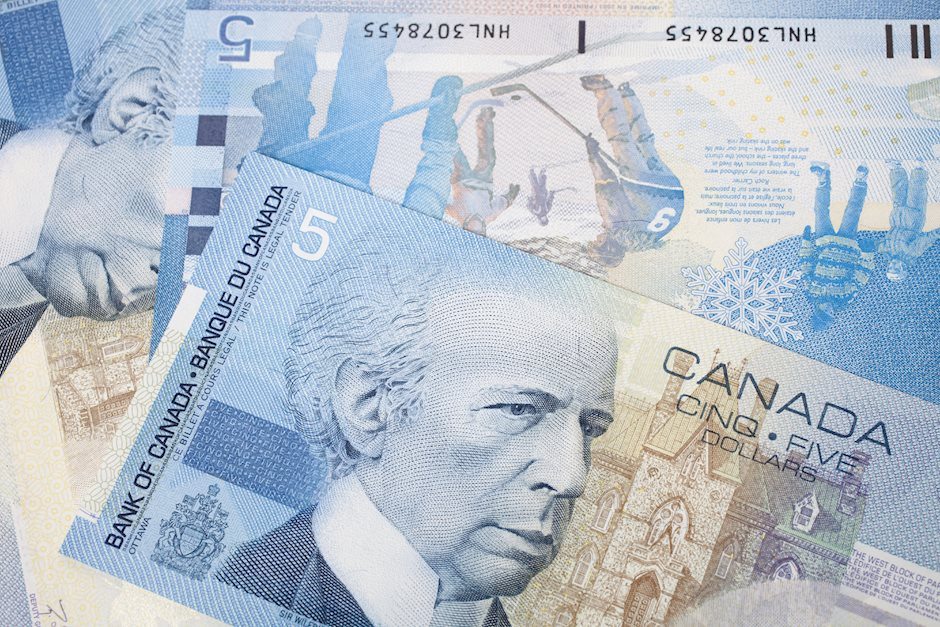USD/CAD consolidates near 1.3800 ahead of Fed speakers
- USD/CAD trades sideways near 1.3800 as investors await Fed speakers for more guidance on interest rates.
- The Fed is expected to follow a moderate rate-cut path.
- Investors expect the BoC to cut interest rates again to revive job growth.

The USD/CAD pair trades in a tight range near the round-level resistance of 1.3800 in Friday’s European session. The Loonie pair trades sideways as investors await speeches from a slew of Federal Reserve (Fed) officials, who are scheduled to speak in the North American session.
Fed policymakers such as Atlanta Fed Bank President Raphael Bostic, Minneapolis Fed Bank President Neel Kashkari, and Fed Governor Christopher Waller are expected to provide fresh cues about the likely interest rate action in the remainder of the year.
According to the CME FedWatch tool, 30-day Federal Funds futures pricing data shows that there will a 50 basis points (bps) further decline in interest rates in the remaining year, suggesting that the Fed will cut its borrowing rates by 25 bps in November and December.
The Fed seems to follow a moderate policy-easing cycle as recent United States (US) data for September has diminished economic slowdown risks.
Meanwhile, the Canadian Dollar (CAD) broadly stays on the backfoot as the Bank of Canada (BoC) is expected to cut its interest rates again on Wednesday. The BoC has already reduced its borrowing rates by 75 bps to 4.25% this year.
More rate cuts from the BoC appear to be in the pipeline as price pressures in Canada seem to have come under control, and the economy is not operating at full-employment levels. Canadian Unemployment Rate decelerated at a faster-than-expected pace to 6.6% in September but is well above the bank’s target of 5%.
Canadian Dollar FAQs
The key factors driving the Canadian Dollar (CAD) are the level of interest rates set by the Bank of Canada (BoC), the price of Oil, Canada’s largest export, the health of its economy, inflation and the Trade Balance, which is the difference between the value of Canada’s exports versus its imports. Other factors include market sentiment – whether investors are taking on more risky assets (risk-on) or seeking safe-havens (risk-off) – with risk-on being CAD-positive. As its largest trading partner, the health of the US economy is also a key factor influencing the Canadian Dollar.
The Bank of Canada (BoC) has a significant influence on the Canadian Dollar by setting the level of interest rates that banks can lend to one another. This influences the level of interest rates for everyone. The main goal of the BoC is to maintain inflation at 1-3% by adjusting interest rates up or down. Relatively higher interest rates tend to be positive for the CAD. The Bank of Canada can also use quantitative easing and tightening to influence credit conditions, with the former CAD-negative and the latter CAD-positive.
The price of Oil is a key factor impacting the value of the Canadian Dollar. Petroleum is Canada’s biggest export, so Oil price tends to have an immediate impact on the CAD value. Generally, if Oil price rises CAD also goes up, as aggregate demand for the currency increases. The opposite is the case if the price of Oil falls. Higher Oil prices also tend to result in a greater likelihood of a positive Trade Balance, which is also supportive of the CAD.
While inflation had always traditionally been thought of as a negative factor for a currency since it lowers the value of money, the opposite has actually been the case in modern times with the relaxation of cross-border capital controls. Higher inflation tends to lead central banks to put up interest rates which attracts more capital inflows from global investors seeking a lucrative place to keep their money. This increases demand for the local currency, which in Canada’s case is the Canadian Dollar.
Macroeconomic data releases gauge the health of the economy and can have an impact on the Canadian Dollar. Indicators such as GDP, Manufacturing and Services PMIs, employment, and consumer sentiment surveys can all influence the direction of the CAD. A strong economy is good for the Canadian Dollar. Not only does it attract more foreign investment but it may encourage the Bank of Canada to put up interest rates, leading to a stronger currency. If economic data is weak, however, the CAD is likely to fall.
Author

Sagar Dua
FXStreet
Sagar Dua is associated with the financial markets from his college days. Along with pursuing post-graduation in Commerce in 2014, he started his markets training with chart analysis.
















